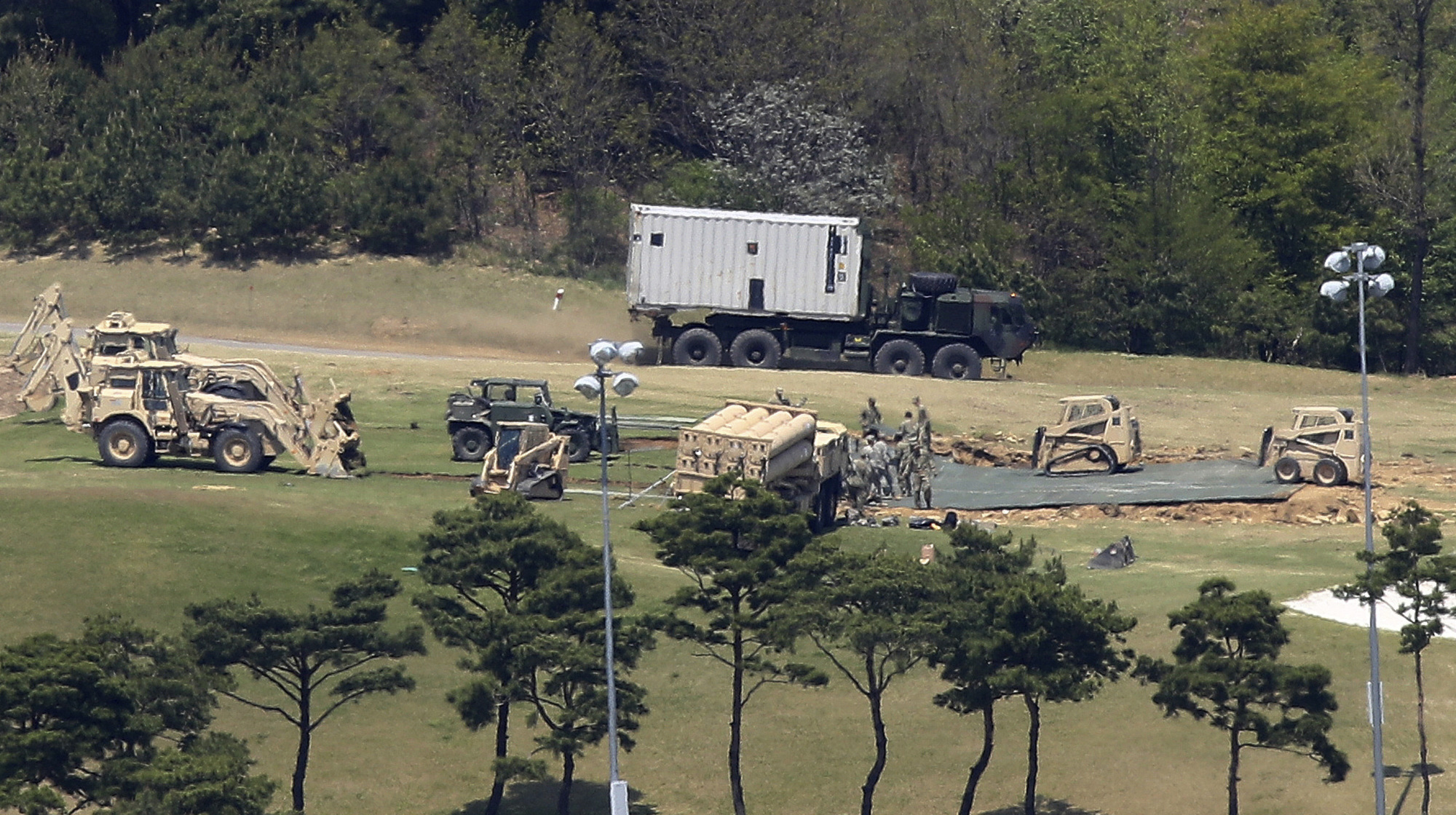SEOUL, July 29 (Xinhua) -- South Korean President Moon Jae-in on Saturday ordered his aides to consult with U.S. counterparts about the deployment of four more mobile launchers of the U.S. Terminal High Altitude Area Defense (THAAD) after the Democratic People's Republic of Korea (DPRK)'s test-launch of a ballistic missile.
The DPRK test-fired an unidentified missile, which the country described as an intercontinental ballistic missile (ICBM) called Hwasong-14, at 11:41 p.m. (1441 GMT) Friday from Jagang province, the central northernmost part of the DPRK, according to South Korea's Joint Chiefs of Staff (JCS).
The ballistic missile of an intercontinental range flew about 1,000 km and was lofted as high as around 3,700 km. It was an advanced Hwasong-14, which traveled 933 km at a maximum altitude of 2,802 km at the July 4 launch.
President Moon convened the national security council (NSC) meeting at the presidential Blue House right after the DPRK's missile launch was reported to him.
Attending the meeting were ministers of defense, foreign affairs and unification as well as presidential chief of staff, top presidential security advisor and intelligence agency chief.
During the meeting, Moon instructed his aides to consult with the U.S. side on strengthening the South Korea-U.S. defense capability and the reliable expanded deterrence capability, including the early installation of the remaining THAAD launchers, senior presidential press secretary Yoon Young-chan said.
On April 26, two mobile launchers and other elements of the U.S. missile shield were transported in the middle of night to the former golf course in Seongju county, North Gyeongsang province.
One THAAD battery, which Seoul and Washington decided in July last year to deploy in southeast South Korea, is composed of six mobile launchers, 48 interceptors, the AN/TPY-2 radar and the fire and control unit.
Four THAAD mobile launchers were reportedly delivered to a U.S. military base near the THAAD site.
Moon also ordered a show of force through the joint U.S.-South Korea missile-firing drills in response to Pyongyang's missile-launch provocation.
Earlier in the morning, the combined forces of South Korea and the United States staged the live-fire missile exercise along the east coast, mobilizing the South Korean military's Hyunmoo-II ballistic missiles and eight U.S. Army's ATACMS surface-to-surface missiles.
